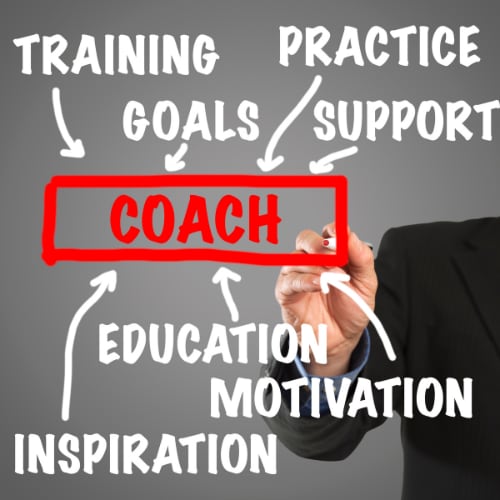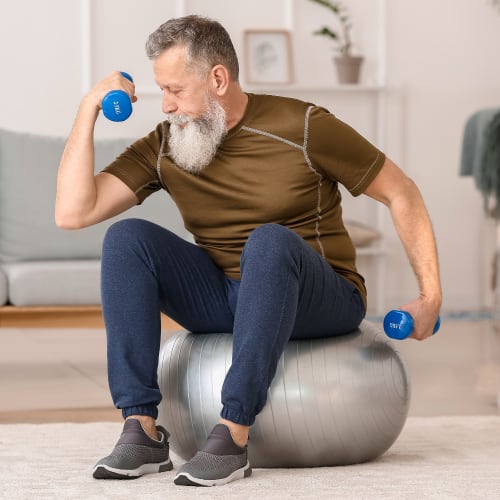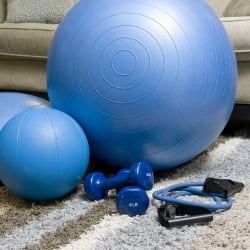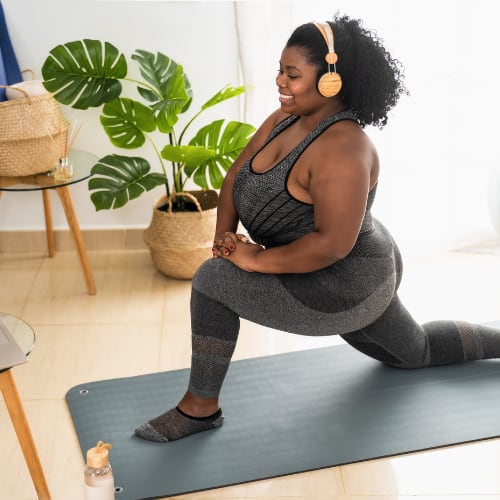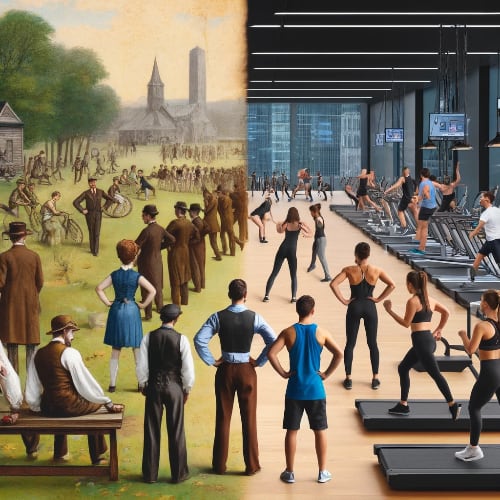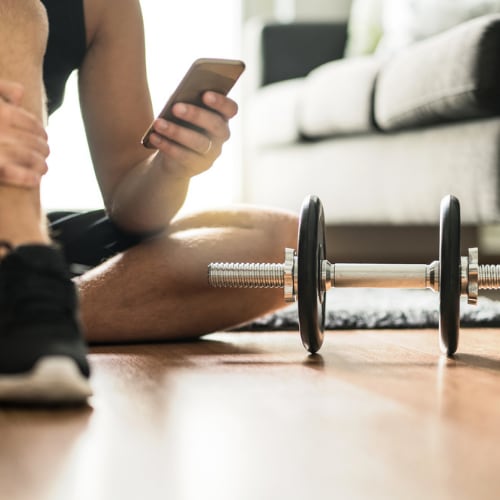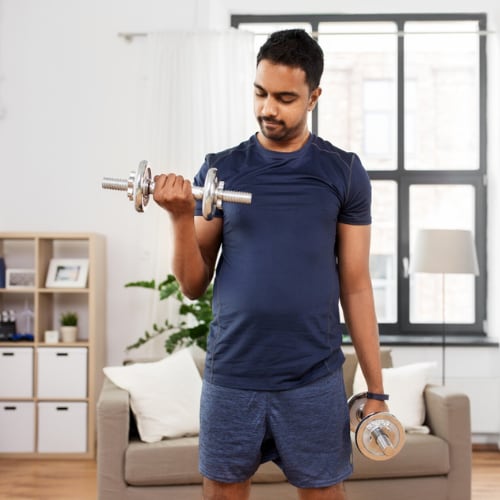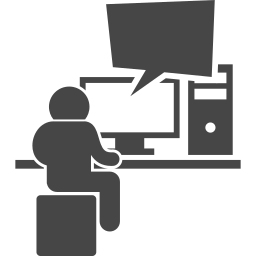 Why Move?
Why Move?
Why Move?
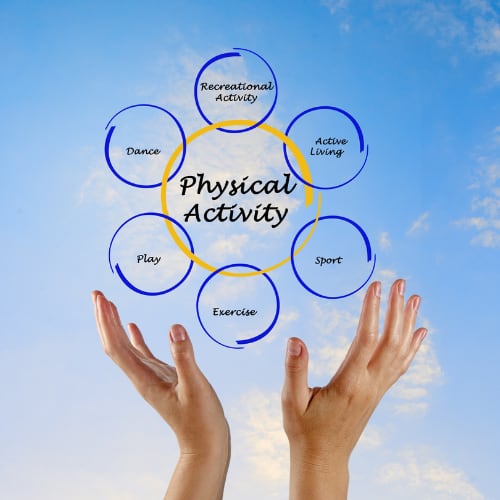
-
Main Ideas
Learning Objective
Understand the biological and psychological factors that impact motivation for exercise and physical activity.
Behavioral Objective
Implement physical activity routines by prioritizing discipline over waiting for motivation to develop.
Key Thought
Exercise is essential for both physical and mental health, and self-discipline is the key to maintaining a consistent routine.
-
Main Ideas
Learning Objective
Understand the biological and psychological factors that impact motivation for exercise and physical activity.
Behavioral Objective
Implement physical activity routines by prioritizing discipline over waiting for motivation to develop.
Key Thought
Exercise is essential for both physical and mental health, and self-discipline is the key to maintaining a consistent routine.
-
Terms
- Chronic Inflammation
noun
A long-term inflammatory response that can result from an ongoing immune response, often due to poor diet, stress, or exposure to toxins, leading to various chronic diseases.
- Moderate Intensity Exercise
noun
Physical activity that increases the heart rate and breathing but allows for conversation, such as fast walking or cycling on a flat road.
- Self-Coercion
noun
The act of using discipline to force oneself into taking action, such as exercising, when motivation is lacking.
- Vigorous Intensity Exercise
noun
High-effort physical activity that significantly raises the heart rate and breathing, making it difficult to carry on a conversation, such as jogging or swimming laps.
-
Terms
- Chronic Inflammation
noun
A long-term inflammatory response that can result from an ongoing immune response, often due to poor diet, stress, or exposure to toxins, leading to various chronic diseases.
- Moderate Intensity Exercise
noun
Physical activity that increases the heart rate and breathing but allows for conversation, such as fast walking or cycling on a flat road.
- Self-Coercion
noun
The act of using discipline to force oneself into taking action, such as exercising, when motivation is lacking.
- Vigorous Intensity Exercise
noun
High-effort physical activity that significantly raises the heart rate and breathing, making it difficult to carry on a conversation, such as jogging or swimming laps.
Introduction
Instincts don't always determine what's best for us. Our instincts have evolved over generations, shaped by fear, social behaviors, and resource management. These instincts have become ingrained at a cellular level, but our needs may not align with those old survival patterns in today's world. With access to safety, community, and various life resources, we may be misinterpreting what we need for a healthy and fulfilling life.
What We Already Know About Exercise Repeated One More Time
It is well known that exercise is an important part of maintaining wellness. It's hard to find anyone who doesn't understand this, but only about 20% of Americans meet the physical activity guidelines that scientists believe we need to maintain health.1 The following guidelines define the weekly physical activity recommended for adults.2
The Guidelines
Option One to Meet Exercise Guidelines:
- 2.5 hours of moderate-intensity exercise each week
- AND at least two sessions per week of weight training that work all major muscle groups (legs, hips, back, abdomen, chest, shoulders, and arms)
- Moderate intensity includes a perceived increase in breathing and heart rate
- Moderate activity accrues health benefits if conducted in bursts as short as 10 minutes of duration (but not shorter)
- Daily activities cannot count unless they raise your breathing and heart rate for at least 10 minutes.
- Examples of Moderate Intensity activity: fast walking, water aerobics, doubles tennis, cycling on a flat road with small hills, pushing a lawn mower, shoveling snow
Option Two to Meet Exercise Guidelines:
- 1.25 hours of vigorous-intensity exercise each week
- AND at least two sessions per week of weight training that work all major muscle groups (legs, hips, back, abdomen, chest, shoulders, and arms)
- During vigorous activity, it's difficult to say a long sentence without pausing for breath
- Examples of Vigorous intensity activities: singles tennis, step aerobics, swimming laps, jogging, cycling on fast or hilly terrain
But I Just Don't Feel Like Exercising
Research shows that people who don't exercise feel less inclined to exercise. This may have deep evolutionary roots. Historically, humans lived during times of calorie scarcity. Our bodies evolved to store fat, particularly in the abdominal area, as a sign of safety-ample food and low stress. This stored fat sent a message: stay sedentary and safe.
Couch Potatoes and Lean Beans
The opposite case held as well. When people had little stored fat, it signaled that they were under stress and needed to seek better living conditions or more food. Stored fat meant "stay put," while lack of fat meant "get active and find more resources."
In today's world of abundance, this instinct harms us by encouraging sedentary behaviors even when we need to move.
Chronic Inflammation
Stored fat contributes to chronic inflammation, further demotivating physical activity. Overstretched fat cells send distress signals, triggering the body's natural healing response. This chronic inflammation, in turn, sends signals to "rest" rather than be active, further hindering our motivation to exercise.3
Coercion is the Answer
People who aren't regular exercisers face an uphill battle in starting and maintaining a routine. The lack of willpower isn't a personal failing; it's a biological instinct. However, overcoming this requires intentional effort and discipline. Instead of waiting for motivation to strike, it's essential to coerce oneself into exercising.
Discipline Over Motivation
Exercise isn't something to wait around for. Regular exercise happens when we force ourselves to take the first step. It requires self-discipline rather than waiting for a sudden burst of motivation. We must make it happen by actively pushing ourselves into action.
Citations:
1 Centers for Disease Control and Prevention. (2013, May). One in five adults meet overall physical activity guidelines. Retrieved March 28, 2014, from http://www.cdc.gov/media/releases/2013/p0502-physical-activity.html
2 Centers for Disease Control and Prevention. (2014, March 3). How much physical activity do adults need?. Retrieved March 28, 2014, from http://www.cdc.gov/physicalactivity/everyone/guidelines/adults.html
3 Nunn, A. V., Guy, G. W., Brodie, J. S., & Bell, J. D. (2010). Inflammatory modulation of exercise salience: using hormesis to return to a healthy lifestyle. Nutrition & Metabolism, 7(87). https://doi.org/10.1186/1743-7075-7-87
10-Minute Bursts Challenge
Objective: Begin incorporating physical activity into your daily routine by using discipline rather than waiting for motivation.
Activity:
- Commit to 10-minute bursts of exercise at least three times a day. Choose simple exercises like walking, push-ups, or jumping jacks.
- Mix up your routine with different activities like biking, swimming, or high-intensity interval training (HIIT) at least twice a week.
- Track your progress over the course of a week and note any changes in energy, mood, or motivation levels.
Build Your Exercise Routine
Objective: Cultivate self-discipline by removing reliance on spontaneous motivation for exercise.
Activity:
- Create an exercise schedule that includes short daily activities you enjoy, such as walking or dancing. Stick to it for one week.
- Reflect on your experience in a journal: Did you have to push yourself? What worked, and what didn't?
- Identify any barriers and brainstorm ways to overcome them, such as setting reminders or finding a workout buddy.
Course Outline
![]() Session Expired from Inactivity
Session Expired from Inactivity
Do you want to?
9618 Jefferson Highway, Suite D-191
Baton Rouge LA 70809-9636
(888) 424-0032 |
support@supplementrelief.com
* Disclaimer: This page is available exclusively for SupplementRelief.com clients. None of the information on this website is intended to replace your relationship with your healthcare provider(s). Nothing should be considered medical advice. The information, knowledge, and experience shared on this website are the opinions of SupplementRelief.com. This site and its content are intended to enhance your knowledge base as YOU MAKE YOUR OWN HEALTHCARE DECISIONS in partnership with your qualified health professional.
* These statements have not been evaluated by the Food and Drug Administration. These products and services are not intended to diagnose, treat, cure, or prevent disease.
* There is NO GUARANTEE OF SPECIFIC RESULTS for the products or services offered, and the RESULTS CAN VARY for each individual. Any results claimed by our customers are based on individual experiences that are unique and cannot be guaranteed.
FirstFitness Nutrition and NuMedica may be promoted and sold on the internet ONLY by Authorized Resellers who have been approved by and have registered their website domain with these companies. They strictly prohibit, and actively monitor, the UNAUTHORIZED SALE or RESALE of their products in ALL online public shopping portals including Amazon, eBay, and others and into other countries. All products purchased in SupplementRelief.com are for PERSONAL USE ONLY and CANNOT BE RESOLD to others. Please report violations of Reseller Policy directly to FirstFitness Nutrition at 800.621.4348 and to NuMedica at 800.869.8100.
The content and photographs on this website are copyrighted or Licensed Material and may not be downloaded for other than personal use. Republication, retransmission, reproduction, or any other use of the content or photographs is prohibited. ©2010-2024 SupplementRelief.com.
Are you sure you want to remove this item?

